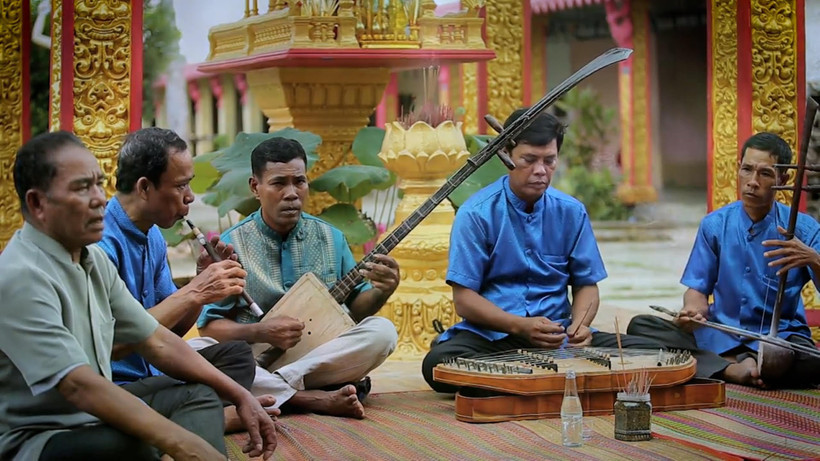In the Khmer language, “Cham rieng” means singing, while “chapey” refers to a traditional musical instrument. For generations, Cham rieng chapey has been an essential spiritual expression for the Khmer community in southern Vietnam, especially after long days of hard labor in the fields.

Dr. Son Ngoc Hoang, a musician and head of the Vietnam Musicians Association in Soc Trang Province, explains: “Cham rieng chapey means singing while playing the chapey lute, or telling stories through song. The performer doesn't rely on pre-written lyrics or sheet music but improvises based on a story, usually in four-line stanzas of seven syllables each, accompanied by music and rhythm.”
There is no written record pinpointing the exact origins of Cham rieng chapey, but according to respected Acha (elderly, influential members of the Khmer community), this art form predates other Khmer performance traditions such as Robam dance, Du Ke opera, or the A day lyrical exchanges.
Much like hat xam - a northern Vietnamese tradition of street storytelling through song - Cham rieng chapey performers both sing and play the chapey lute themselves.
With roots in India, the chapey features a long neck and a large resonator, taking on various shapes such as a balanced trapezoid, a bodhi leaf, a pineapple, or resembling the Vietnamese dan day.
Its warm, mellow tones are well suited to gentle, narrative music. A distinctive trait of Cham rieng chapey is that the artist doesn’t sing continuously with instrumental accompaniment.
Instead, they sing a verse unaccompanied, pause to play a musical interlude, then resume singing.
Lyrics are spontaneously composed, and each performer’s melodic phrasing, vocal style, and instrumentals vary, creating a rich and diverse tradition.
Cham rieng chapey is often featured at weddings or religious ceremonies, with no fixed space or schedule. Depending on the occasion, a performance can last for several hours or extend from sunset until dawn.
To deliver a successful performance, the artist must skillfully combine various elements: musical mastery, poetic fluency, improvisational prowess, and alignment with the event's theme and mood.
Consequently, a Cham rieng chapey artist must possess not only vocal talent and instrumental proficiency but also a broad base of knowledge from both life experience and literature, especially the sacred sa tra (palm-leaf manuscripts) of the Khmer people.
The recent decision by the Ministry of Culture, Sports and Tourism to include Cham rieng chapey in the national list of intangible cultural heritage is a well-deserved recognition of its cultural value.
It fulfills the long-standing hopes of the Khmer community and its artists to preserve a uniquely expressive art form for future generations.
PV